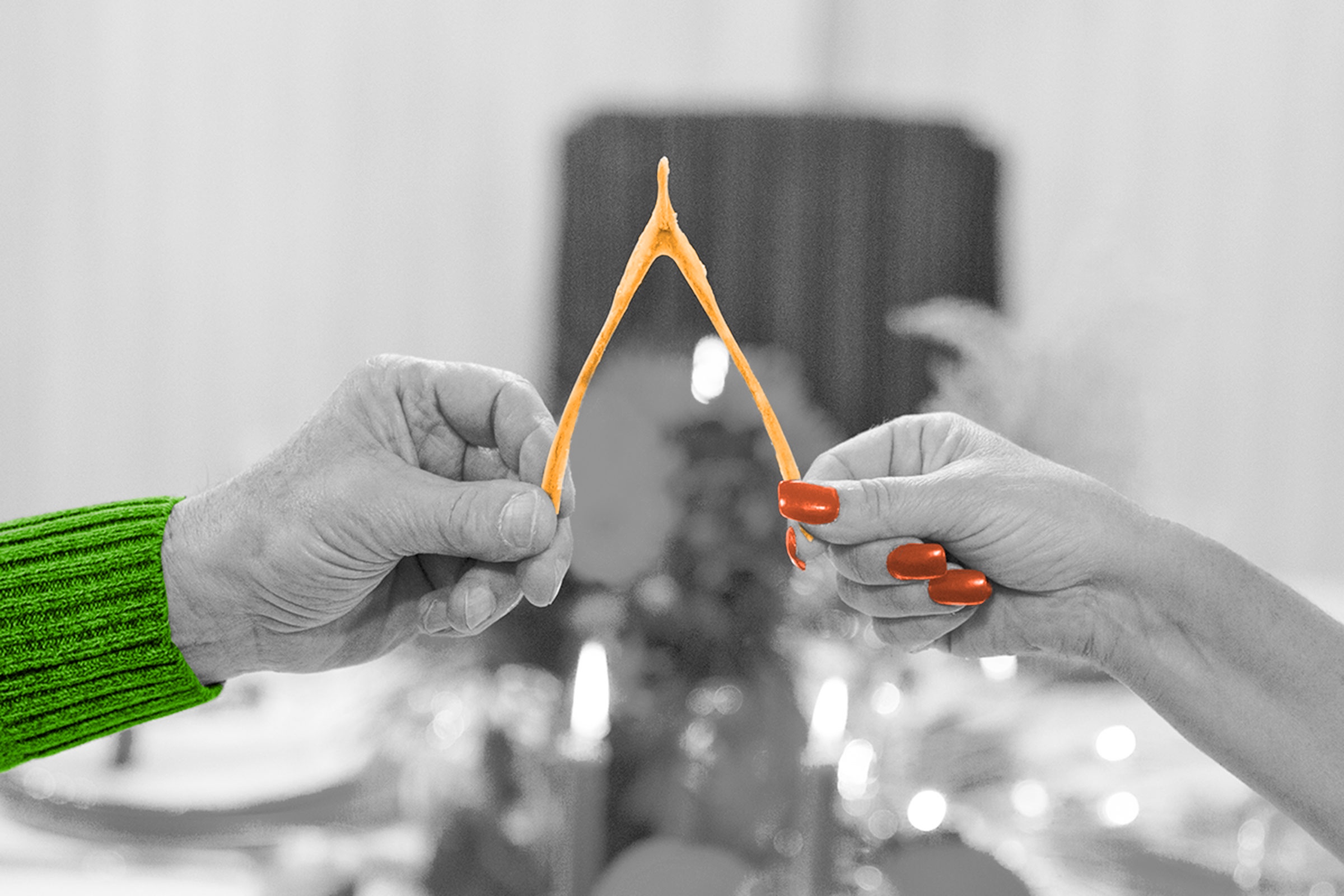

Autumn has a lot of fans, and it’s easy to see why, with the abundance of warm spices, colorful trees, crunchy leaves underfoot, and delicious seasonal produce. But fall also means the nights are getting longer, and many cultural traditions, from All Hallow’s Eve to Dia de los Muertos, indicate a thin veil between our world and what lies beyond. It’s an environment ripe for superstition.
For example, how does the annual harvest help predict how rough the winter ahead will be? Where does the wishbone tradition come from, and what’s up with bobbing for apples? How do you ward off evil spirits while keeping your home smelling delightful? These six superstitions will help keep your fall festive — and just a little spooky.
Catching a Falling Leaf Is Auspicious

Next time an autumn leaf blows past your face, try to catch it — legend has it that it will bring good luck, or that you get to make a wish on it. The superstition can get more complex depending on the color and type of leaf you catch: A red leaf (or maple leaves in general) could mean good luck in love, and an orange leaf could mean inner transformation. Ginkgo leaves symbolize enlightenment, as well as hope and resilience.
How long does the good luck last? It could be a week or a month or the whole season, depending on who you’re talking to. After you catch it, you can release it back into the wind or bring it inside to incorporate into your seasonal decor.
Wishbones Bring Good Luck

Americans who celebrate Thanksgiving with a whole turkey may still observe this custom. Bird species have a part called the furcula, a forked bone that helps support them in flight, commonly known as the wishbone. In some traditions, two people pull either side of the wishbone, and the person who breaks off the bigger piece can either make a wish or enjoy good luck, depending on your version of the custom. The practice goes back to medieval England, where meals celebrating St. Martin’s Day, also known as Martinmas (traditionally an end-of-winter feast day commemorating the fourth-century St. Martin of Tours), typically included geese.
Carved Gourds Can Ward Off Evil Spirits

Ever wonder why we carve jack-o’-lanterns on Halloween? The tradition dates back to Celtic observations of Samhain, celebrated from October 31 to November 1. Because of the holiday’s association with the supernatural, warding off dark forces was a must. Early traditions employed big bonfires to get the job done, but once towns developed, people needed something safer. Hollowed-out turnips or gourds were cheap and easy to get a hold of, so they became makeshift lanterns. Initially they were just pierced to let the light out, but gradually they started to take on the shape of the scary spirits they were supposed to scare off.
When European immigrants came to North America, there weren’t as many turnips or gourds — but there were plenty of pumpkins, so the tradition evolved into the modern jack-o’-lantern.
Bobbing for Apples Tells Your Romantic Future

Although it’s not as much of a fall staple as it once was, bobbing for apples — the act of trying to pick an apple out of a bucket of water with your teeth — is a classic way to celebrate autumn. It’s become more of an all-ages activity, but it has its roots in superstitious matchmaking.
In one tradition, women secretly marked apples before their potential mates went a-bobbing, and future matches were foretold depending on whose apple ended up in whose mouth.
In another practice, women were the ones doing the biting; if they managed to get the apple in one bite, it indicated true love, with the prognosis getting a little worse with each subsequent try. In a more complex tradition, the woman to bite an apple first would be the first to get married.
Cinnamon Brooms Can Ward Off Bad Energy

The coming of longer nights inspired a lot of folklore about malevolent spirits — and with it, myriad ways to send them packing. Cinnamon brooms (strips of cinnamon bark tied into a broom shape) do double-duty as an air freshener and a paranormal protector. To ward off evil, you’re supposed to hang one above your front door or literally sweep your porch with one. Nowadays, they’re available in many grocery stores, so there’s no crafting required.
Even if you don’t believe in spooky stuff, cinnamon brooms make for festive and sweet-smelling fall decor, so they can’t hurt.
Onions Can Predict Winter Weather

When harvest season rolls around, the chilly winter months are just around the corner, which means climate divination and produce are a natural fit. Keeping an eye on your onion skins was once a popular way to predict winter conditions. Farmer’s Almanac has a handy rhyme to tell you how to read them:
Onion’s skin very thin,
Mild winter coming in;
Onion’s skin thick and tough,
Coming winter cold and rough.
Thick apple skin, thick corn husks, and flowers blooming late in autumn are other traditional indicators that a rough winter is on its way. Fowl bones were also sometimes used: After their Martinmas celebrations, 15th-century Bavarians would let their Martinmas geese’s breastbones dry out and use that to predict the weather, although it took special skills to interpret it.
